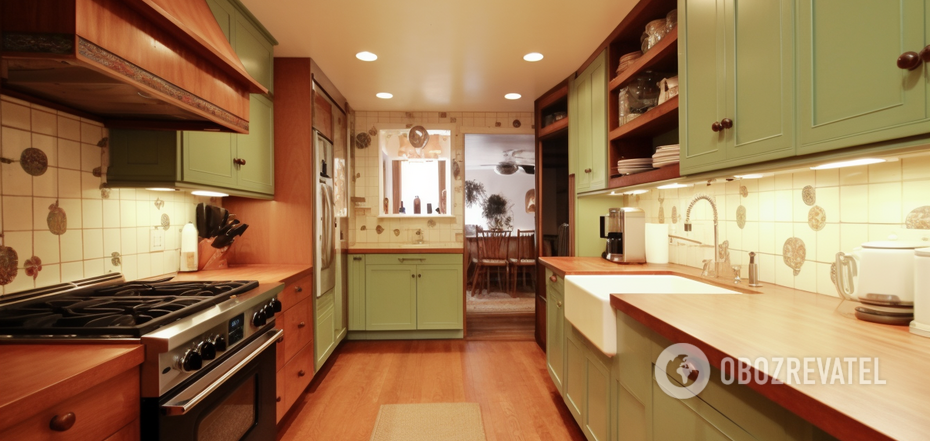Lifestyle
How to get rid of rust stains on kitchen surfaces: effective ways
You should always make sure that your kitchen is a clean and healthy place to cook. But some surfaces develop unsightly rust stains due to the combination of water and oxygen molecules on iron or metals that contain iron. Rust often occurs on sinks, cookware, pots, pans, and even large stainless steel appliances.
You don't have to use chemicals to deal with these stains. Commonly available ingredients, such as white vinegar, lemon juice, and baking soda, will do the trick, House Digest experts say.
White vinegar and baking soda
Kitchen sinks stay wet most of the time, so it's no surprise that these areas are particularly vulnerable to rust stains. Acetic acid causes a chemical reaction called neutralization, which leads to the dissolution of iron oxide. And the remaining water-soluble salt is easily washed off during the cleaning process, creating a stain-free surface.
To clean a stainless steel sink, mix ½ cup white vinegar with ½ cup water. Dip a microfiber cloth in the mixture and wipe the surfaces. You can also sprinkle baking soda on the stains, add a little vinegar, and scrub the area with a non-abrasive brush. If the countertop is made of granite or other natural stone, make sure that vinegar does not get on it. This will lead to erosion of the stone.
Lemon juice
Citric acid reacts with iron oxide, so it's an ideal stain remover for stainless steel and porcelain sinks. It is best to combine the juice with salt or baking soda. This provides a gentle, natural clean. The easiest way is to cut the lemon in half and dip the flesh into a bowl of salt. Alternatively, you can make a paste of lemon juice mixed with salt or baking soda. Leave the paste on the rust for 15-20 minutes and then scrub the surface with an old toothbrush.
Pumice stone
An important caveat: this life hack is not suitable for stainless steel sinks, but pumice stone can effectively remove rust stains from porcelain and ceramic sinks. Pumice stone is a type of igneous rock that is formed as a result of the cooling of lava ejected from a volcano. Pumice has an abrasive texture that removes rust stains by rubbing against hard surfaces such as porcelain or ceramic. Keep in mind that pumice can scratch stainless steel, wood, and the sealant on natural stone countertops.
Oxalic acid from potatoes
It's the oxalic acid content that makes sliced potatoes a great cleaner when you're fighting rust. Oxalic acid, when it comes into contact with rust, causes a chemical reaction called double displacement. In this process, iron oxide (commonly called rust) is converted to ferric oxalate, a water-soluble salt that can be easily washed off.
Cut the raw potato in half to reveal the fleshy interior. Dip the potato in liquid dish soap, baking soda, or salt and scrub away any rust stains Afterwards, rinse the surface thoroughly and dry it with a clean cloth. This life hack is effective for kitchen sinks,
Foil
Among its many uses, aluminum foil also removes rust stains by breaking down iron oxide. The life hack works because aluminum is a metal that attracts oxygen, pulling it away from the iron oxide compound. As an added bonus, aluminum is a soft metal that can be used to rub stainless steel and chrome surfaces without fear of scratching them.
You just need to tear off a sheet of foil and crumple it into a ball. Moisten the foil with water and rub the rust stain. For added effect, you can moisten the aluminum ball with vinegar instead of water.
Ketchup
Ketchup contains acetic acid and salt, which are effective in removing rust. It is best to cover the contaminated area with a thick layer of ketchup and leave it overnight. Then wipe off the ketchup with a soft cloth moistened with a solution of lemon juice and water and rinse with a regular dishwashing detergent.
Subscribe to the OBOZ.UA channels in Telegram and Viber to keep up with the latest events.



























